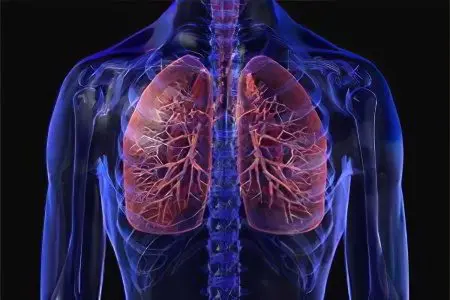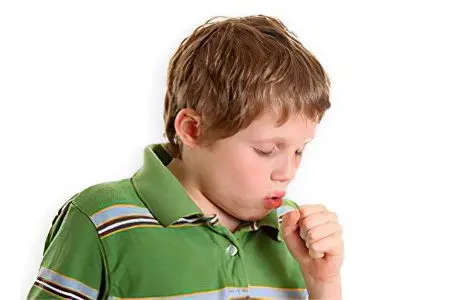Contents
What is chronic bronchitis?
Chronic bronchitis is a long-term sluggish or progressive inflammation in the bronchi. It is necessary to talk about it in cases where the central symptom of the disease is cough, which occurs in a patient over a three-month period (in total for a year or at the same time), at least 2 years in a row. All other cases of prolonged cough due to confirmed inflammation in the bronchi are classified as either acute or recurrent bronchitis.
The allocation of such a strict time frame for the diagnosis of chronic bronchitis is not accidental. Since diseases of the bronchial tree are among the most common, such restrictions have been introduced. If every case of a prolonged cough was perceived as chronic bronchitis, then there would not be a single person who would not have this diagnosis recorded. This is especially true for smokers and people with harmful working conditions in relation to the broncho-pulmonary system. Constant irritation of the bronchial mucosa leads to the maintenance of the inflammatory process.

Another point of relevance of the allocation of time frames for chronic bronchitis is the pathogenetic mechanisms of the disease. This means that only an inflammatory process that exists for a certain time can cause structural changes in the bronchi. Their result is a violation of bronchial patency, outflow of bronchial secretions, mechanisms of local immunity, which makes it impossible to completely cure the disease. On their background, the infection is activated. In case of further progression of inflammation, the process turns into chronic obstructive pulmonary disease. Its abbreviation is COPD. In such cases, we already have to talk about clinical manifestations, not only in the form of a cough, but also about signs of respiratory failure.
Symptoms of chronic bronchitis
Cough
Refers to the main symptoms of uncomplicated chronic bronchitis. According to its characteristics, the course and specific clinical variants of the disease are determined. It can be either dry or wet. Cough with expectoration of sputum indicates insufficient mucociliary clearance and refers to the protective mechanisms of the natural cleaning of the bronchial tree from excess mucus. The mechanism of its occurrence is associated with reflex influences, which are caused by irritation of the receptor apparatus of the bronchial and tracheal mucosa. In this case, the impulses are concentrated in the cough center of the brain, which leads to a reflex contraction of the respiratory muscles. With small bronchi, the situation is much more difficult, since there are practically no receptors in them. Consequently, the spread of the inflammatory process to this silent zone, with a narrow lumen, leads to its rapid and complete obturation. The defense mechanism in the form of a cough will not arise.
If chronic bronchitis is initially accompanied by manifestations of bronchial obstruction as a result of bronchospasm, this leads to a dry, unproductive cough. Sometimes it becomes paroxysmal, hacking. Such an attack ends with the expectoration of a small amount of mucus. Accompanying a dry cough with remote wheezing during forced expiration indicates the presence of impaired patency of the small bronchi.
Dyspnea

Typical cases of chronic bronchitis without bronchial obstruction are not accompanied by shortness of breath. For its occurrence, the inflammatory process must either be very active and progressively increase, or proceed for a long time (tens of years). Such patients cannot even clearly note the time when they fell ill. Dry cough with scanty sputum, especially in the morning, becomes a normal norm for them and is not perceived as a pathology at all. Therefore, the occurrence of shortness of breath in the complication of chronic bronchitis with respiratory failure is marked by patients as the onset of the disease. The most characteristic such clinical variant of the appearance of shortness of breath for smokers with a long history of smoking and those with frequent seasonal exacerbations of cough.
In a completely different way, shortness of breath manifests itself and is regarded in obstructive forms of chronic bronchitis. In such cases, it occurs, almost from the very beginning of the disease. In the initial stages of the process, it can occur only during physical exertion, accompanied by a cough. But the progression of this symptom is quickly noted with its occurrence at minimal exertion and even at rest.
Sputum
In the initial stages of chronic bronchitis, as well as in remission of a long process, its amount can be scarce. In this case, it is represented by mucous secretions at the end of a coughing fit. Its color can be from colorless transparent to yellow-brown or black (miners). It all depends on the cause of the disease.
The progression of the disease or its exacerbation is marked by expectoration of mucopurulent or purulent sputum. It has a greenish tint and high viscosity. The appearance of such sputum indicates the activation of the microbial flora and requires appropriate medical correction. By the amount and time of purulent sputum discharge, one can presumably determine the presence of complications of chronic bronchitis. If a large amount (about 60-100 ml) of purulent discharge from the respiratory tract is released once in the morning along with a cough, this indicates the presence of bronchiectasis (saccular dilatations of the bronchi, where mucus with pus accumulates).
Wheezing
If there is sputum in the lumen of the bronchus of any caliber, this obstructs the airflow. As a result, air turbulence occurs, which is manifested by wheezing. According to the characteristics of this symptom, one can roughly determine which bronchi are involved in the inflammatory process and the nature of its course. For remission of chronic bronchitis, dry rales are most characteristic, which are determined by auscultation. If the process aggravates, the amount of sputum increases and moist rales (large, medium or fine bubbling) can be heard, according to the diameter of the affected bronchi. The progression of bronchial obstruction of small-caliber bronchi is indicated by the appearance of high-pitched whistling rales on expiration, which can be heard at a distance.
Hemoptysis
Does not apply to the typical manifestations of chronic bronchitis. It can occur only with a long course of this disease and always indicates its progression or serious complications. According to the severity of hemoptysis, you can determine their presence. Of course, if these are small streaks of blood, blood-stained or dirty brown sputum, then its appearance at the end of a coughing fit can be considered quite natural. But, when blood is released more often or in large quantities, it is worth thinking about the cancerous transformation of the bronchial mucosa or hemorrhagic bronchitis.
asthmatic syndrome

Characteristic only for chronic bronchitis with the presence of bronchial obstruction. It can be caused both by a long course of a chronic inflammatory process, the result of which is a narrowing of the bronchus and its rigidity, and by bronchospasm. This suggests that the asthmatic syndrome in the form of attacks of shortness of breath and a feeling of lack of air with difficulty exhaling can occur at any stage of the disease. It all depends on the reactivity of the patient’s bronchi to the effects of environmental factors (tobacco smoke, room dust, changes in air temperature). Over time, such coughing attacks begin to occur not only in the morning, but also at night and throughout the day.
Cyanosis
Typical cases of uncomplicated chronic bronchitis do not result in discoloration of the skin. But its obstructive forms, accompanied by the addition of respiratory failure, almost always cause cyanosis. It can be represented by acrocyanosis – cyanosis of the extremities, tip of the nose and ears, or diffuse cyanosis of the skin over the entire surface. Its occurrence indicates the decompensation of the disease and the irreversible loss of the ability of the bronchi to adequately conduct air to the lungs. At the same time, blood oxygenation is sharply reduced. Such blood is not able to provide normal metabolic processes in the tissues, which leads to their hypoxia. In practice, this is manifested by cyanosis.
Along with the difficulty in the intake of air, the possibility of removing the spent respiratory mixture also suffers. As a result, an excess of carbon dioxide in the alveolar lumen and blood. Clinically, this is manifested by increased cyanosis, sleep disturbance and insomnia, headaches and dizziness, sweating and weakness. The prolonged existence of hypoxia leads to the appearance of additional signs in the form of deformation of the nail plates (like watch glasses) and thickening of the distal digital phalanges (like drumsticks).
auscultatory data
They are an important element in the diagnosis of chronic bronchitis. With the transition of the process to COPD, there is a change not only in the bronchi, but also in the restructuring of the lung tissue. Auscultatory, it is recorded as hard breathing with possible weakening in emphysema, and scattered dry rales of different timbres. The appearance of dry wheezing of the whistling type, mainly in the expiratory phase, indicates the defeat of the smallest bronchi.
Chronic bronchitis without signs of bronchial obstruction in remission does not manifest itself at all. In the exacerbation phase, coarse rales may appear against the background of hard breathing, and in the presence of sputum, moist rales. Their character depends on the caliber of the affected bronchi. In chronic bronchitis at the stage of COPD, the auscultatory picture is supplemented by signs of cardiopulmonary insufficiency in the form of an accent of 2 tones on the pulmonary artery, hepatomegaly, tension of the jugular veins.
Causes of chronic bronchitis

In the occurrence of a chronic inflammatory process in the bronchi, the following reasons may be involved:
Infections. They are represented by bacterial, viral and atypical pathogens. Very rarely, only this factor is sufficient for the occurrence of a chronic process. There must be a combination of it with other reasons that will support the negative influence of each other. Extremely important in this regard belongs to chronic foci of infection in the tonsils, sinuses and carious teeth;
Hereditary predisposition and congenital features of the bronchial tree. A very important group of reasons for which the bronchi are initially susceptible to any harmful environmental factors. Minimal provocateurs cause bronchospasm and increased mucus production. Its obstructed outflow contributes to the activation of the infection, the maintenance of inflammation with the possibility of developing bronchial obstruction;
Tobacco smoke. The main risk group for the development of chronic bronchitis are smokers;
Work in conditions of occupational hazards. In such cases, constant inhalation of air contaminated with coal or other types of dust leads to its deposition in the bronchi. The natural reaction of the body to foreign particles is inflammatory. Naturally, under the conditions of the continued influx of dust particles, self-cleaning mechanisms cannot manage to remove all accumulated deposits. This is the basis of process timing;
Chemical pollutants. All chemical compounds, the vapors of which are regularly inhaled by a person, like dust cause a bronchial reaction in the form of inflammation or bronchospasm;
Climatic conditions. Climatic conditions are rarely the root cause of chronic bronchitis. But they have a general unfavorable background against which all other causes are realized. These include low air temperatures, high humidity and industrial air pollution;
Decreased immunity. It becomes a favorable background for triggering the microbial factor, as one of the causes of chronic bronchitis.
Chronic bronchitis in children

Chronic bronchitis in childhood has its own characteristics in relation to the causes of the development and course of the inflammatory process. First of all, it is worth pointing out that the rule of three months of coughing a year for two consecutive years in pediatric practice does not always work. This means that in children under the age of three, such a diagnosis cannot be made at all. It is this age group of children that can suffer from bronchitis for most of the year, even being in hospital, but the diagnosis will be recurrent, acute or obstructive bronchitis. But it will never be chronic.
The explanation for this approach is the spontaneous resolution of all inflammatory changes in the bronchi when the child reaches a certain age. Usually, this turning point occurs after three years. Most children with stubborn bronchitis get rid of this problem for good. Only in that part of sick babies, in which this did not happen and the symptoms of bronchitis continue to remind themselves of themselves with constant exacerbations, cough with sputum and signs of impaired bronchial patency, the diagnosis of chronic bronchitis becomes eligible. This is also logical from a pathogenetic point of view, since structural changes are already registered in the bronchi of such children, violating mucociliary clearance and the processes of natural bronchial cleansing.
Causes of chronic bronchitis in children
If in adults in the etiology of chronic bronchitis the main place is given to smoking and polluted air, then in children the infection comes to the fore. This is due to the imperfection of the immune defense mechanisms of the child’s body against the background of constant contact with various pathogens. In educational and preschool institutions among limited groups of children, circulating pathogens are characterized by particular aggressiveness. The main place among them is given to respiratory viruses (adenovirus, parainfluenza, RS-viruses), hemophilic infection, marocella, staphylococci and streptococci, pneumococci, atypical pathogens.
Introduced into the bronchi of a child, the infection cannot always be fully neutralized by immune cells, which leads to its spread to the lymph nodes, or persistent penetration into the epithelium of the mucous membrane. Therefore, even after clinical improvement during the treatment of bronchitis, any hypothermia of a general nature or inhalation of cool air can cause a second exacerbation of the process.
The last cause of chronic bronchitis in children is the increased reactivity of the bronchial tree. Its result is excessive secretion of mucus and bronchial spasm. These causative mechanisms underlie the obstructive forms of chronic bronchitis. The cough reflex in children is also slightly inhibited compared to adults, which leads to a violation of sputum excretion with an aggravation of the condition.
Clinical features
Among the symptoms of chronic bronchitis in children, it is not so much a cough that comes to the fore as a violation of the general condition. The younger the child, the more this pattern is observed. Almost every exacerbation is accompanied by a hyperthermic reaction, a decrease in appetite and activity of the child. It is possible to follow the nature of sputum only in older children, as they can collect it for analysis. Children of younger age groups cannot do this, because they simply swallow it.
As in adults, sputum may be clear mucous or yellow-green mucopurulent. Chronic bronchitis with bronchial obstruction always causes anxiety in the child, shortness of breath, wheezing, which can be heard even at a distance (remote wheezing). They can be both wet and whistling, dry, heard on exhalation or in both phases of the respiratory cycle. Emphysema and persistent signs of respiratory failure occur only in children with a long course of chronic bronchitis.
Chronic bronchitis treatment

In the treatment of chronic bronchitis, etiopathogenetic drug therapy is used. It is not always possible to completely get rid of this problem, but it is quite possible to achieve stabilization of the condition and maximum slowdown in the progression of the disease. For this can be used:
Antibacterial agents;
expectorants;
Bronchodilators;
Anti-inflammatory and antihistamines;
inhalation therapy;
Physiotherapeutic methods (halotherapy);
Normalization of lifestyle.
[Video] Dr. Evdokimenko – Cough, bronchitis, treatment. Weak lungs. How to treat? What many doctors don’t know about:









